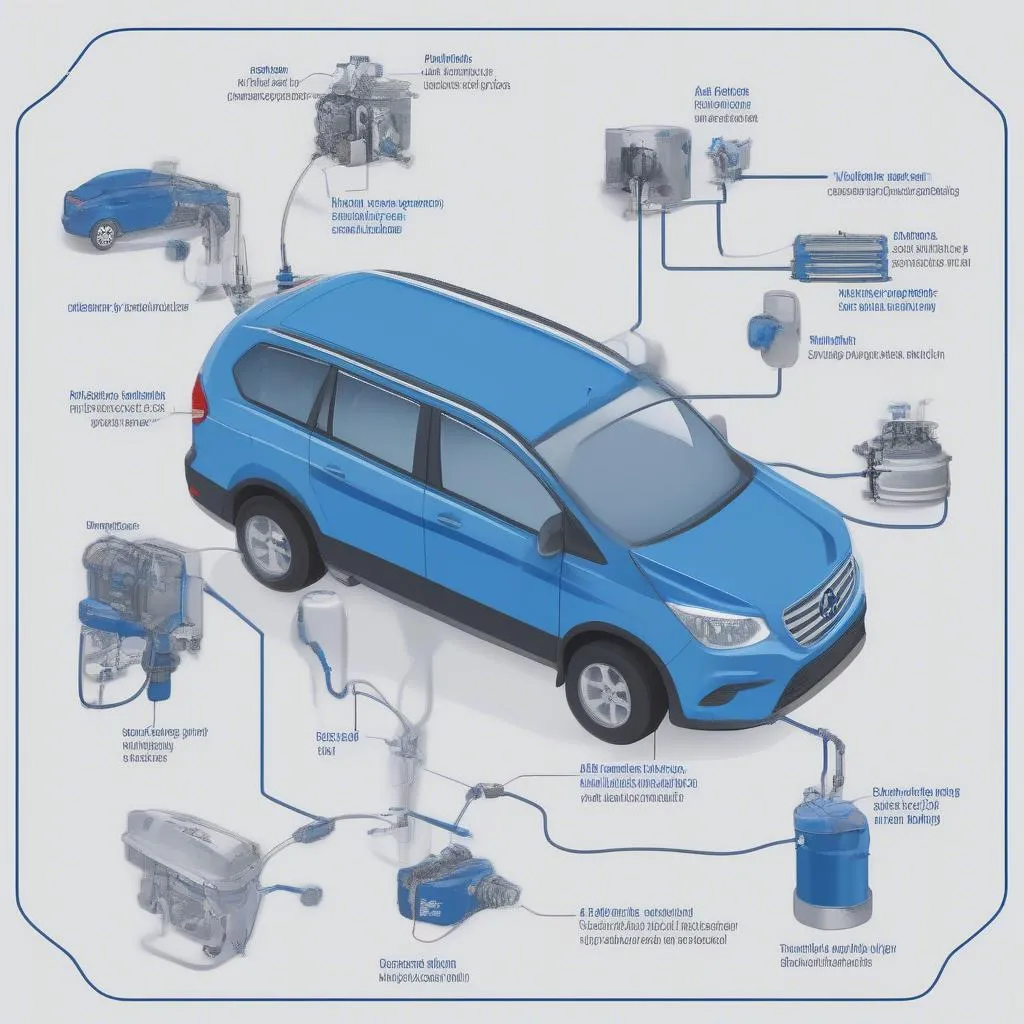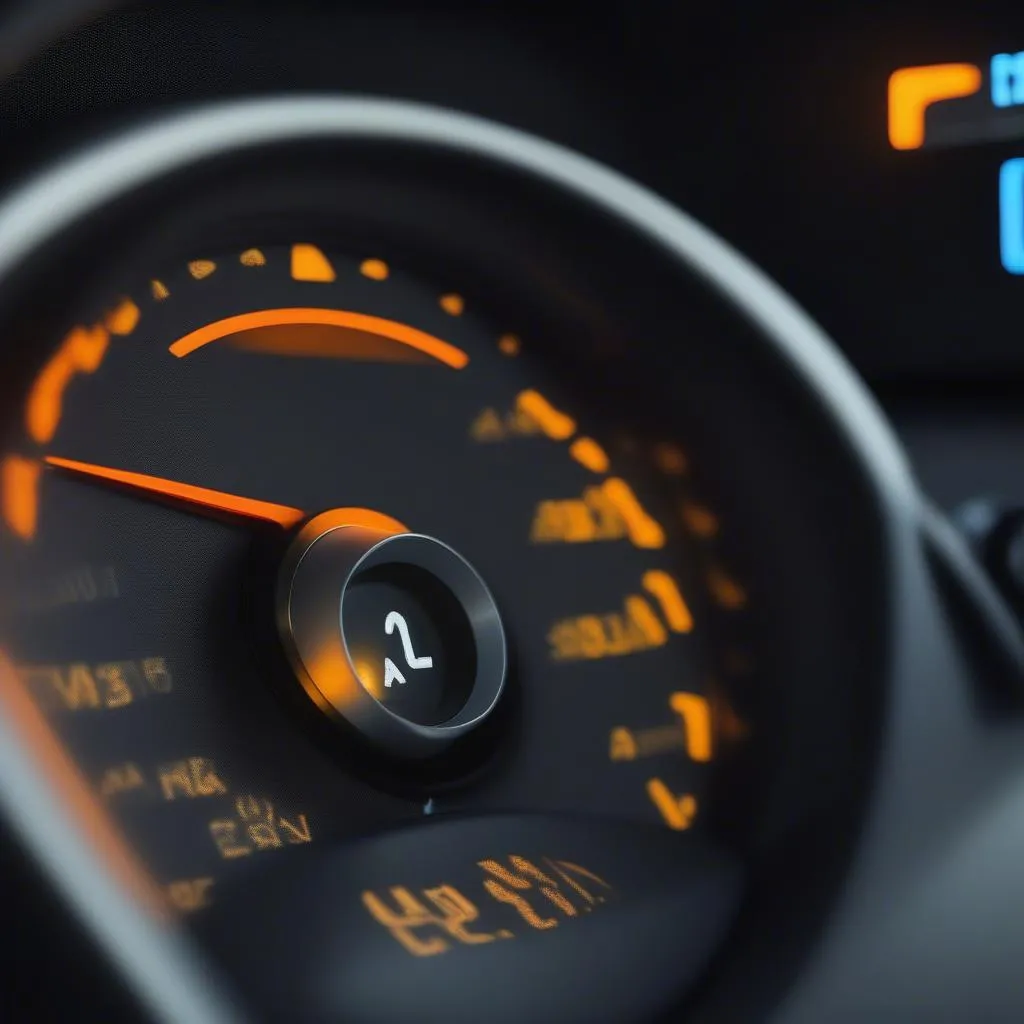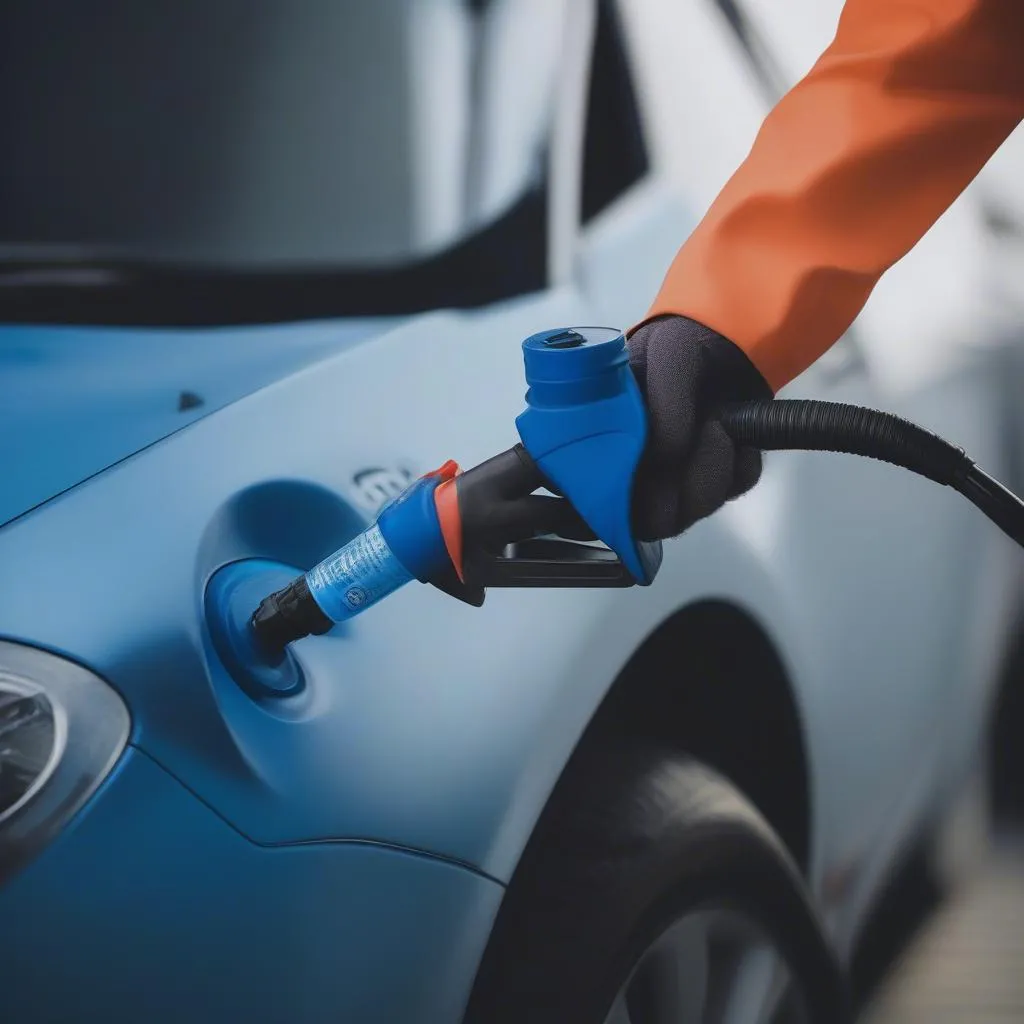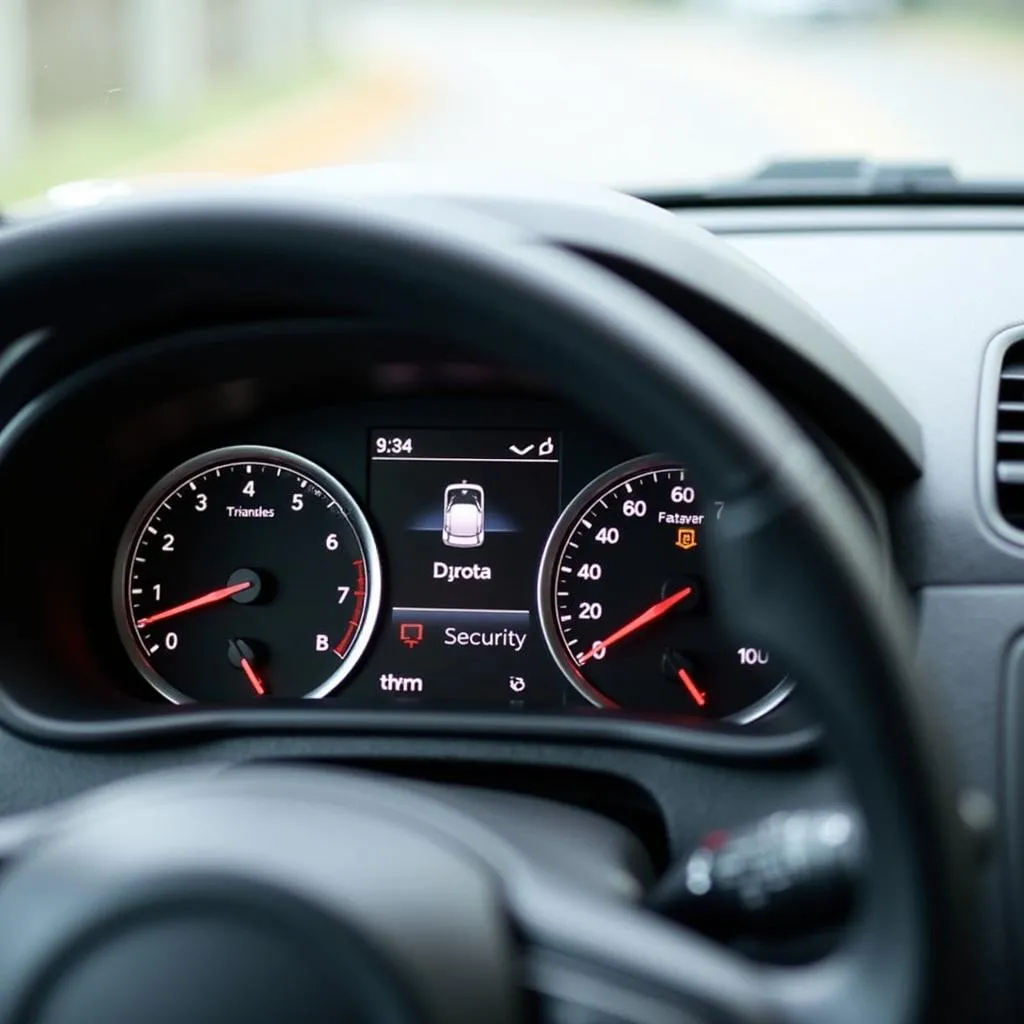The AdBlue warning light, a somewhat cryptic symbol on your dashboard, can be a source of anxiety for many drivers. Understanding what triggers this warning and how to address it can save you from potential headaches on the road. This article delves into the intricacies of the AdBlue system, explains why the warning light might illuminate, and provides a step-by-step guide to help you resolve the issue.
What is AdBlue and Why It’s Important
AdBlue, also known as Diesel Exhaust Fluid (DEF), is a non-toxic solution injected into the exhaust system of diesel vehicles with Selective Catalytic Reduction (SCR) technology. It helps convert harmful nitrogen oxides (NOx) emissions into harmless nitrogen and water vapor, playing a crucial role in reducing your vehicle’s environmental impact and meeting emission standards.
 AdBlue System
AdBlue System
Why is My AdBlue Warning Light On?
The AdBlue warning light signals a problem with your vehicle’s SCR system. This could mean:
- Low AdBlue Level: The most common reason, indicating you need to refill your AdBlue tank soon. Ignoring this warning can lead to your vehicle going into “limp-home mode” or even failing to start.
- System Malfunction: A faulty sensor, a problem with the AdBlue injector, or issues with the SCR catalyst itself can also trigger the warning light.
Identifying the Problem
Modern vehicles often display messages alongside the warning light, giving you a clearer indication of the issue. However, if you’re unsure, here’s a quick guide:
- Check your owner’s manual: It will detail the specific AdBlue warning messages for your car model.
- Use an OBD2 scanner: This handy device can read diagnostic trouble codes from your vehicle’s computer, providing more specific information about the problem.
 AdBlue Warning Light
AdBlue Warning Light
What You Need for the Fix
Depending on the reason behind the AdBlue warning light, you might need:
- AdBlue fluid: Ensure you purchase the correct type specified for your vehicle.
- OBD2 scanner: For diagnosing system faults beyond low fluid levels.
- Basic tools: Might be required for sensor replacement, depending on your vehicle model.
Resolving the AdBlue Warning Light Issue
- Refill the AdBlue tank: If your warning light indicates a low fluid level, refilling the AdBlue tank is the first and easiest solution. Locate the AdBlue filler cap (usually blue and located near the diesel filler cap or in the trunk) and carefully refill the tank using a dedicated AdBlue nozzle.
- Reset the AdBlue system: After refilling, you might need to manually reset the system. This process varies between car manufacturers but usually involves navigating through your car’s dashboard menu. Refer to your owner’s manual for specific instructions.
- Address system malfunctions: If the warning light persists after refilling or indicates a system fault, it’s crucial to consult a qualified mechanic or dealership. Advanced diagnostics and repairs might be necessary to address issues with sensors, the injector, or the SCR catalyst.
FAQs
Can I continue driving with the AdBlue warning light on?
It’s not recommended. While you might be able to drive for a short distance, ignoring the warning could eventually lead to your vehicle entering “limp-home mode” or even preventing it from starting.
How often do I need to refill AdBlue?
This varies depending on your driving style and vehicle model, but typically, you’ll need to refill AdBlue every 5,000 to 10,000 miles.
Can I add AdBlue myself or do I need to go to a garage?
You can refill AdBlue yourself, but ensure you purchase the correct type and use a dedicated nozzle to prevent spills.
What happens if I accidentally put diesel in the AdBlue tank?
Do not start your engine! Mixing diesel with AdBlue can severely damage the SCR system. Contact a mechanic or your dealership immediately for assistance.
Need Further Assistance?
CARDIAGTECH offers a range of cutting-edge diagnostic tools and software solutions designed to help mechanics and car enthusiasts quickly and efficiently identify and resolve automotive issues, including those related to AdBlue systems. Visit our website or contact us for expert advice and support on all your vehicle diagnostic needs.
Expert Insight: “Addressing AdBlue system issues promptly is crucial to avoid costly repairs and ensure your vehicle operates at peak efficiency while minimizing its environmental impact,” says Robert Turner, a leading automotive engineer specializing in emission control systems, in his book “The Complete Guide to Modern Diesel Engines.”
Remember, properly maintaining your vehicle’s AdBlue system not only ensures compliance with environmental regulations but also contributes to a smoother, more efficient, and ultimately more enjoyable driving experience.
 Refilling AdBlue Tank
Refilling AdBlue Tank


